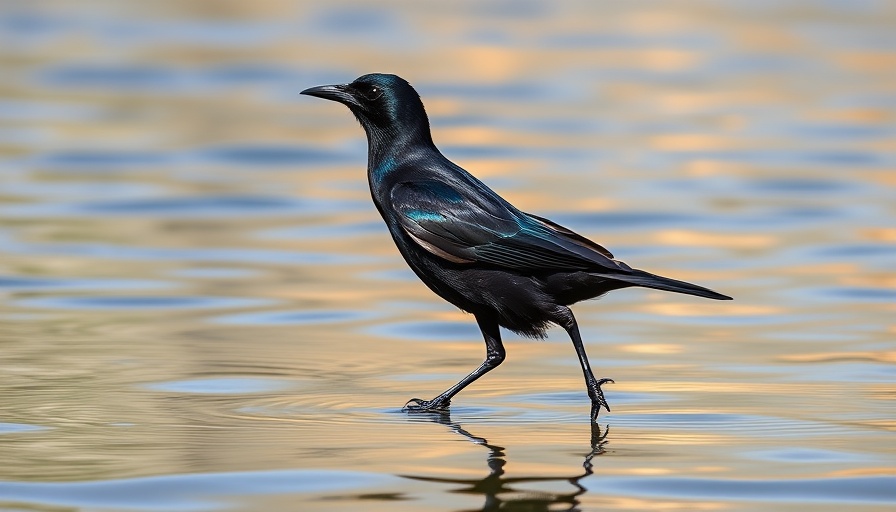
Discover the Enigmatic Great-tailed Grackle: Nature's Charismatic Performer
If you've ever wandered through the parks of the southern United States or ventured down to Central America, you may have heard an unusual cacophony of sounds echoing through trees and fields—the Great-tailed Grackle. Known for their glossy black plumage and impressively long V-shaped tails, these birds bring a unique charm to the natural world. Their calls, which can mimic the sounds of machinery, further enhance their reputation as one of nature's quirky entertainers.
The Great-tailed Grackle's Remarkable Adaptability
Also referred to as the Mexican Grackle, these birds thrive in diverse habitats, from bustling urban settings to peaceful farmlands. Their exceptional adaptability has enabled them to spread northward as far as Iowa, although they are most populous in regions like southern Texas and Central America. This ecological versatility highlights their resourcefulness, making them favorites among birdwatchers and nature enthusiasts alike.
Vocal Talents and Social Behavior
What sets the Great-tailed Grackle apart is not just its striking appearance, but its vocal performance. Known for their remarkable range of sounds—rattles, screeches, whistles, and creaks—these birds engage in elaborate vocal exchanges that can be quite mesmerizing. They often gather in large flocks, creating a symphony of sounds that underscores their social interactions. Males utilize tail displays and vocalizations to assert dominance and establish territories, showcasing their sophisticated social hierarchies.
How Grackles Contribute to Their Ecosystem
The presence of Great-tailed Grackles in both urban and rural areas speaks to their integral role in local ecosystems. Their behaviors contribute to seed dispersal and pest control, which are vital for maintaining ecological balance. By observing these birds, we not only enjoy their beauty but also gain insights into the health of our surroundings.
The Fascinating World of Grackles Awaits
Whether you're an avid birdwatcher or a casual admirer of nature, the Great-tailed Grackle offers a delightful opportunity to connect with the wild. Their charming antics, vocal ability, and ecological importance make them more than just birds; they're a testament to nature's creativity and resilience. So next time you hear their distinctive calls, take a moment to appreciate these remarkable avian performers.
 Add Row
Add Row  Add
Add 




Write A Comment